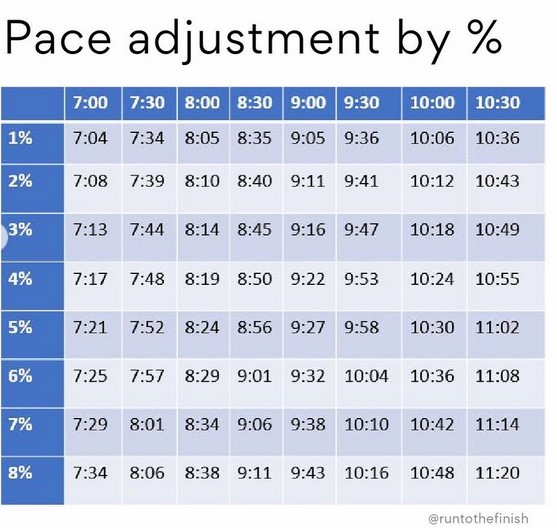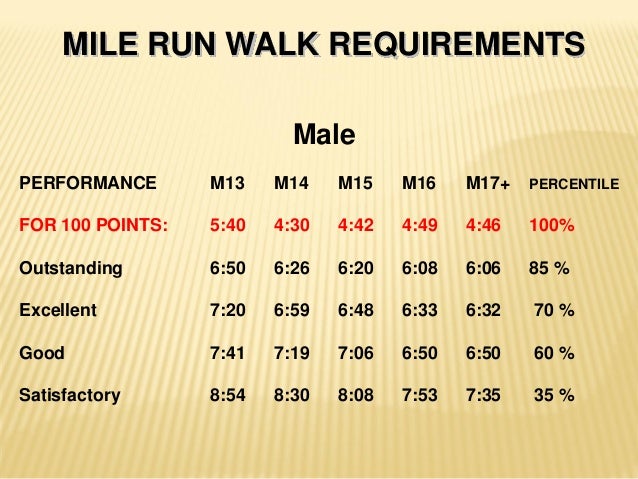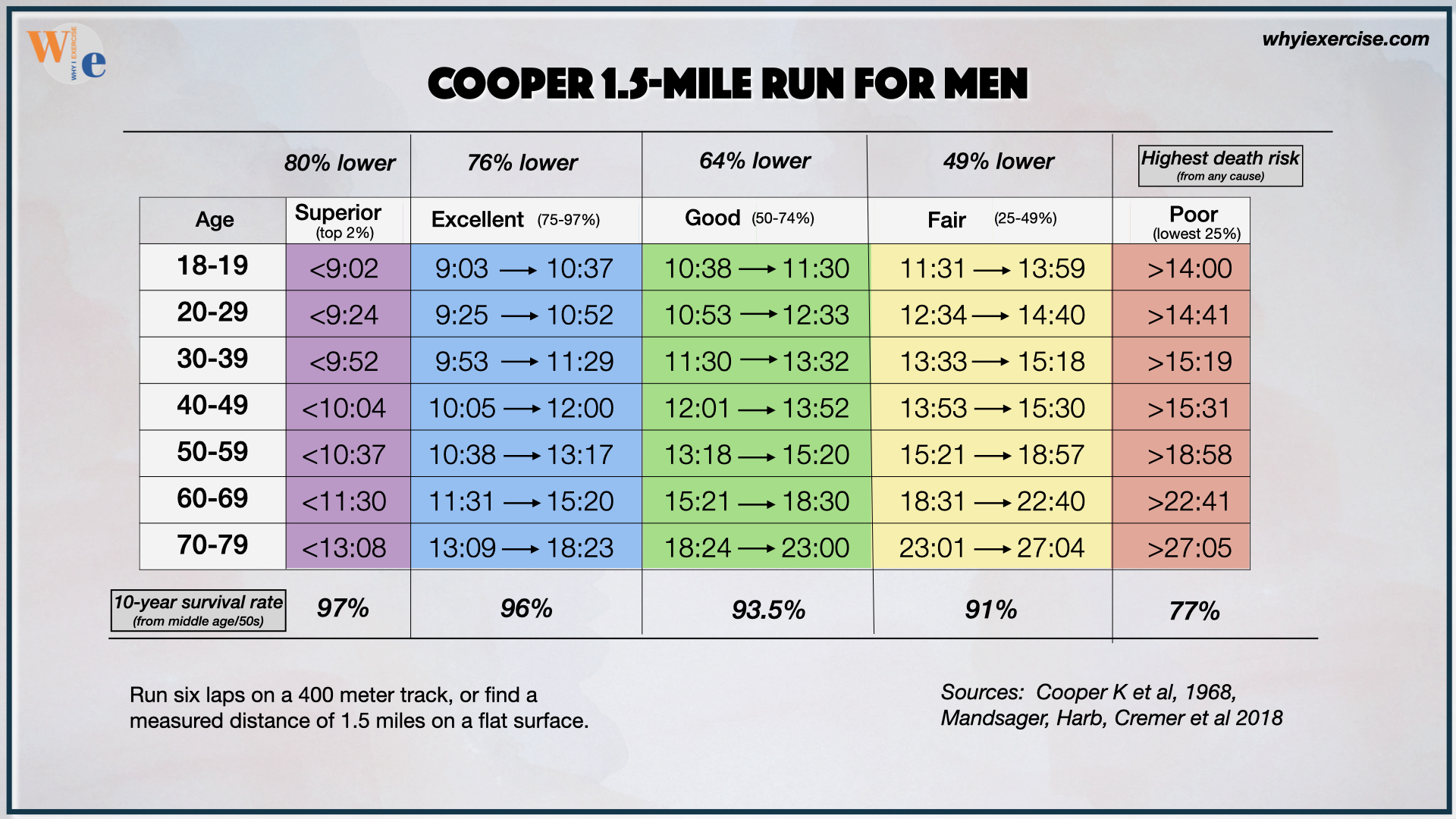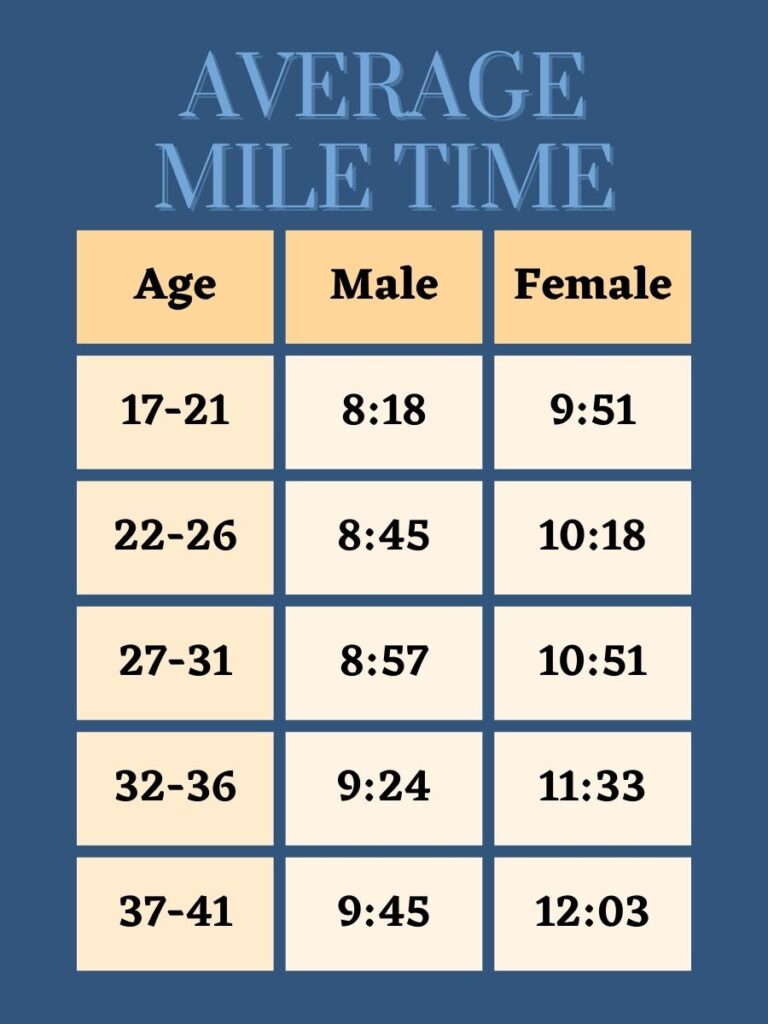What is a Mile Time and Why is it Important to Consider Age?
A mile time is a measurement of how long it takes an individual to run a mile. This metric is commonly used in athletics to evaluate an individual’s cardiovascular fitness, endurance, and speed. When evaluating one’s mile time, it is essential to consider age as it can significantly impact an individual’s physical abilities. As we age, our bodies undergo various changes that can affect our endurance, speed, and strength. For instance, muscle mass tends to decrease with age, which can lead to a decline in physical performance. Additionally, age-related changes in lung function and cardiovascular health can also impact an individual’s mile time. Therefore, comparing a young adult’s mile time to that of a senior may not be a fair or accurate assessment of their respective fitness levels. By taking age into account, we can gain a more accurate understanding of an individual’s physical abilities and create tailored training programs that help them improve their mile time and overall fitness level.
Typical Mile Times for Various Age Groups
Mile times can vary significantly depending on an individual’s age, fitness level, and training history. The following table provides typical mile times for different age groups, from children to seniors:
| Age Group | Typical Mile Time (minutes:seconds) |
|---|---|
| Children (8-10 years old) | 8:00 – 10:00 |
| Pre-teens (11-13 years old) | 6:30 – 8:30 |
| Teenagers (14-18 years old) | 5:00 – 7:00 |
| Young Adults (19-34 years old) | 4:30 – 6:30 |
| Adults (35-54 years old) | 5:00 – 7:30 |
| Masters Runners (55-64 years old) | 6:00 – 9:00 |
| Senior Runners (65+ years old) | 8:00 – 12:00 |
It is important to note that these are general guidelines and that individual mile times may vary. Factors such as genetics, training history, and overall fitness level can all impact an individual’s mile time. Additionally, it is never too late to start running and improving one’s fitness level, regardless of age. With proper training, nutrition, and recovery, individuals of all ages can work towards improving their mile time and overall health.
How to Improve Mile Time for Your Age Group
Improving one’s mile time is a common goal for runners of all ages, and while genetics can play a role in running performance, proper training, nutrition, and recovery are crucial factors in achieving this goal. Here are some practical tips and advice on how to improve your mile time, tailored to different age groups:
Children and Pre-teens (up to 13 years old)
At this age, it’s essential to focus on building a solid foundation of endurance, strength, and flexibility. Here are some tips to help improve your mile time:
- Start with a walk/run program, gradually increasing the running portion over time.
- Incorporate strength training exercises that focus on building core and leg strength.
- Prioritize flexibility and mobility through regular stretching and yoga.
- Make sure to get enough rest and recovery between training sessions.
Teenagers (14-18 years old)
At this age, runners can start to increase their training volume and intensity. Here are some tips to help improve your mile time:
- Gradually increase your weekly mileage, while allowing for adequate rest and recovery.
- Incorporate interval training and tempo runs into your training program.
- Focus on proper running form and technique to improve efficiency and reduce injury risk.
- Ensure adequate nutrition and hydration to support training and recovery.
Young Adults (19-34 years old)
At this age, runners are often in their peak physical condition and can handle higher training volumes and intensities. Here are some tips to help improve your mile time:
- Incorporate a mix of easy runs, interval training, and long runs into your training program.
- Consider hiring a running coach or following a structured training plan.
- Prioritize recovery and injury prevention through regular stretching, foam rolling, and cross-training.
- Ensure adequate nutrition and hydration to support training and recovery.
Adults (35-54 years old)
At this age, runners may start to experience some decline in physical abilities, but with proper training and recovery, mile times can still be improved. Here are some tips:
- Focus on consistency and gradual progression in training.
- Incorporate strength training and flexibility exercises to maintain muscle mass and range of motion.
- Prioritize recovery and injury prevention through regular stretching, foam rolling, and cross-training.
- Ensure adequate nutrition and hydration to support training and recovery.
Masters Runners (55-64 years old) and Senior Runners (65+ years old)
At this age, runners may experience more significant declines in physical abilities, but with proper training, nutrition, and recovery, mile times can still be improved. Here are some tips:
- Focus on consistency and gradual progression in training.
- Incorporate strength training and flexibility exercises to maintain muscle mass and range of motion.
- Prioritize recovery and injury prevention through regular stretching, foam rolling, and cross-training.
- Ensure adequate nutrition and hydration to support training and recovery.
- Consider working with a running coach or medical professional to develop a safe and effective training plan.
By following these tips and tailoring your training program to your age and fitness level, you can work towards improving your mile time and overall running performance.
The Role of Genetics in Mile Time and Age
Genetics can play a significant role in an individual’s running performance and how it changes with age. While training, nutrition, and recovery are crucial factors in improving one’s mile time, genetics can set the foundation for an individual’s “genetic potential” in running.
Genetic potential refers to the upper limit of an individual’s physical abilities, determined by their genetic makeup. While it’s impossible to change one’s genetic potential, understanding it can help runners set realistic goals and tailor their training programs to their unique needs.
Studies have shown that genetics can influence various aspects of running performance, including endurance, speed, and muscle fiber composition. For instance, individuals with a higher proportion of fast-twitch muscle fibers may have a natural advantage in short-distance running, while those with a higher proportion of slow-twitch muscle fibers may excel in long-distance running.
Moreover, research suggests that genetics can influence how an individual’s running performance changes with age. Some studies have found that runners with a specific genetic variant, known as the ACTN3 R577X polymorphism, experience a slower decline in running performance as they age compared to those without the variant.
However, it’s important to note that genetics is just one piece of the puzzle when it comes to running performance and age. While genetics may set the foundation for an individual’s potential, training, nutrition, and recovery are crucial factors in realizing that potential and improving one’s mile time.
Therefore, when evaluating one’s running performance and setting goals, it’s essential to consider both genetics and environmental factors. By understanding their genetic potential and tailoring their training program to their unique needs, runners of all ages can work towards improving their mile time and overall running performance.
The Impact of Training Volume and Intensity on Mile Time and Age
Training volume and intensity are critical factors in improving one’s mile time, but they can also have a significant impact on an individual’s performance as they age. As runners get older, their bodies may not be able to handle the same training volume and intensity as they could in their younger years. Therefore, it’s essential to adjust training programs to accommodate an individual’s age and fitness level.
For instance, young runners may benefit from high-volume, high-intensity training programs that challenge their physical abilities and help them build endurance, speed, and strength. However, as runners age, they may need to reduce their training volume and intensity to prevent injury and allow for adequate recovery. Low-volume, high-intensity interval training (HIIT) programs can be an effective alternative for older runners, as they provide similar cardiovascular benefits while reducing the risk of injury.
Moreover, cross-training and strength training can help runners of all ages improve their mile time and prevent injury. Activities such as swimming, cycling, and yoga can help improve cardiovascular fitness and flexibility, while strength training exercises that focus on building core and leg strength can help improve running economy and reduce the risk of injury.
It’s also essential to prioritize recovery and injury prevention as runners age. Adequate rest and recovery between training sessions can help prevent overtraining and injury, while proper warm-up and cool-down routines can help reduce the risk of muscle strain and soreness. Additionally, working with a running coach or medical professional can help runners develop a safe and effective training program that takes into account their age, fitness level, and individual needs.
Here are some examples of effective training programs for different age groups:
- Children and Teenagers: Focus on building a solid foundation of endurance, speed, and strength through a combination of easy runs, interval training, and strength training exercises.
- Young Adults (19-34 years old): Incorporate a mix of easy runs, interval training, and long runs into your training program, while also prioritizing recovery and injury prevention through cross-training and strength training.
- Adults (35-54 years old): Focus on consistency and gradual progression in training, while also incorporating strength training and flexibility exercises to maintain muscle mass and range of motion.
- Masters Runners (55-64 years old) and Senior Runners (65+ years old): Consider low-volume, high-intensity interval training programs, while also prioritizing recovery and injury prevention through regular stretching, foam rolling, and cross-training.
By adjusting training programs to accommodate an individual’s age and fitness level, runners can work towards improving their mile time and overall running performance while reducing the risk of injury and promoting long-term health and well-being.
Mental Strategies for Improving Mile Time in Different Age Groups
While physical abilities such as endurance, speed, and strength are crucial factors in improving one’s mile time, mental strategies can also play a significant role. Here are some mental strategies that individuals of all ages can use to improve their mile time:
Goal-setting
Setting specific, measurable, and achievable goals can help runners stay motivated and focused on their training. For instance, setting a goal to improve your mile time by 10 seconds every month can help you track your progress and stay motivated to continue training.
Visualization
Visualization is the practice of creating mental images of oneself performing at a high level. By visualizing yourself running a fast mile time, you can help reinforce positive self-talk and build confidence in your abilities.
Positive Self-talk
Positive self-talk involves using positive and encouraging language when talking to oneself during a run. By focusing on your strengths and abilities rather than your weaknesses, you can help boost your confidence and motivation during a run.
Mindfulness
Mindfulness is the practice of staying present and focused on the current moment. By focusing on your breath and the sensations in your body, you can help quiet your mind and reduce anxiety during a run.
Consistency
Consistency is key when it comes to improving one’s mile time. By sticking to a regular training schedule and staying committed to your goals, you can help build momentum and improve your overall running performance.
Moreover, it’s essential to find mental strategies that work for you and tailor them to your unique needs and preferences. By combining physical training with mental strategies, runners of all ages can work towards improving their mile time and overall running performance.
Common Injuries and Prevention Techniques for Runners of Different Ages
Running is a popular form of exercise for individuals of all ages, but it can also come with a risk of injury. Here are some common injuries that runners of different ages may experience and prevention techniques to help reduce the risk of injury:
Children and Teenagers
Children and teenagers may experience injuries such as shin splints, stress fractures, and knee pain due to growth spurts and overuse. To prevent these injuries, it’s essential to focus on proper running form, gradually increase training volume and intensity, and incorporate strength training exercises that target the legs and core.
Young Adults (19-34 years old)
Young adults may experience injuries such as plantar fasciitis, Achilles tendonitis, and runner’s knee due to high training volumes and intensities. To prevent these injuries, it’s essential to prioritize recovery and injury prevention through cross-training, strength training, and proper warm-up and cool-down routines.
Adults (35-54 years old)
Adults may experience injuries such as IT band syndrome, hamstring strains, and plantar fasciitis due to age-related changes in flexibility, strength, and endurance. To prevent these injuries, it’s essential to focus on flexibility and mobility exercises, strength training exercises that target the legs and core, and proper running form.
Masters Runners (55-64 years old) and Senior Runners (65+ years old)
Masters runners and senior runners may experience injuries such as osteoarthritis, tendonitis, and muscle strains due to age-related changes in joint health, muscle mass, and flexibility. To prevent these injuries, it’s essential to prioritize low-impact exercises, strength training exercises that target the legs and core, and proper warm-up and cool-down routines.
By incorporating proper warm-up, cool-down, and cross-training routines, as well as focusing on flexibility, mobility, and strength training exercises, runners of all ages can help reduce the risk of injury and promote long-term health and well-being.
The Benefits of Running for Different Age Groups
Running is a popular form of exercise for individuals of all ages, and for a good reason. Here are some benefits of running for different age groups, and why it’s essential to find a running program that is safe, enjoyable, and tailored to one’s age and fitness level:
Children and Teenagers
Running can help children and teenagers build endurance, strength, and confidence. It can also improve cardiovascular health, bone density, and mental health. However, it’s essential to ensure that children and teenagers follow a safe and age-appropriate running program to prevent injuries and burnout.
Young Adults (19-34 years old)
Running can help young adults improve cardiovascular health, burn calories, and reduce stress. It can also build endurance, strength, and speed. However, it’s essential to prioritize recovery and injury prevention through cross-training, strength training, and proper warm-up and cool-down routines.
Adults (35-54 years old)
Running can help adults improve cardiovascular health, reduce the risk of chronic diseases, and manage weight. It can also build endurance, strength, and speed. However, it’s essential to focus on flexibility, mobility, and strength training exercises to prevent injuries and maintain overall health and well-being.
Masters Runners (55-64 years old) and Senior Runners (65+ years old)
Running can help masters runners and senior runners maintain independence, mobility, and overall health and well-being. It can also improve cardiovascular health, reduce the risk of chronic diseases, and manage weight. However, it’s essential to prioritize low-impact exercises, strength training exercises that target the legs and core, and proper warm-up and cool-down routines to prevent injuries.
By finding a running program that is safe, enjoyable, and tailored to one’s age and fitness level, individuals of all ages can experience the numerous benefits of running and promote long-term health and well-being.








